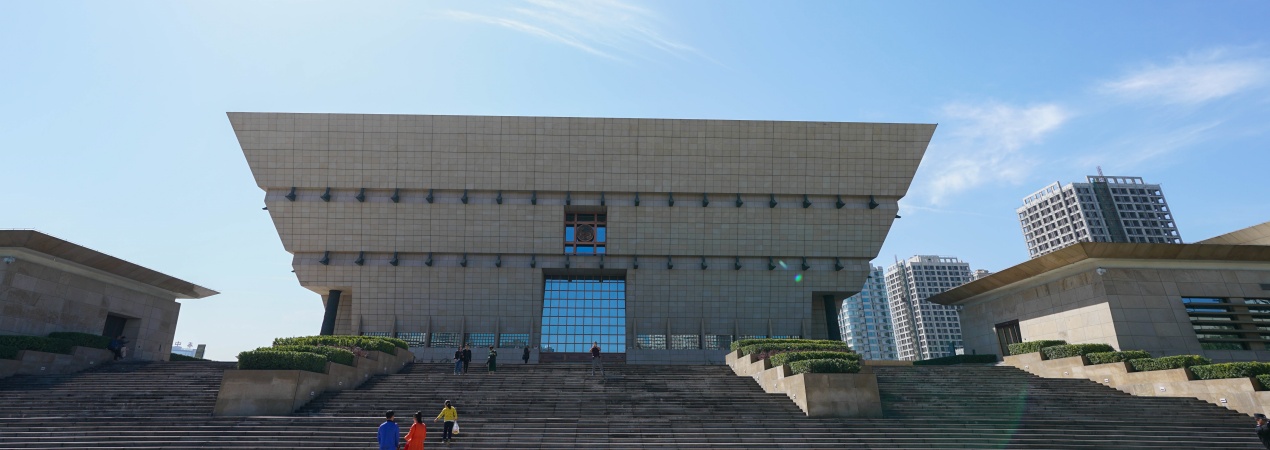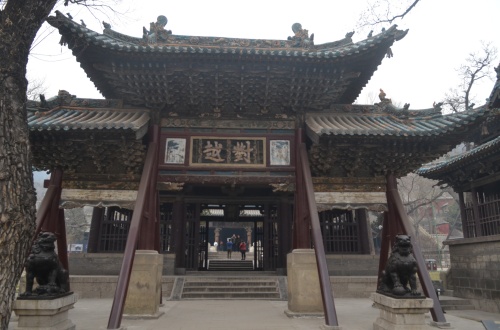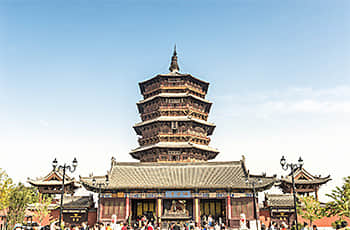Shanxi Museum

The Shanxi Museum sits in a huge building that looks like an ancient Chinese ding tripod. People see it as a cultural center of China's Yellow River civilization. The museum has nearly 500,000 historical things. It has seven history parts and five art showrooms. Four can't - miss shows catch the eye of visitors: Cradle of Civilization, Traces of the Xia - Shang Dynasties, Dominance of the Jin State, and Ancient Architecture. All together, these shows display Shanxi's key historical path and cultural heritage.
- Chinese name: 山西博物院 Shānxī Bówùyuǎn
- Recommended Duration: 3-4 hours
- Entrance Fee: Free (advance online reservation required)
- Opening Hours: 9:00- 17:00 , closed on Mondays
- Best Time to Visit: October-March
- Address: 13 Binhe West Road, Wanbailin District, Taiyuan
-
How to Get There: Metro Line 1 to "Xiyuan Station" followed by 10-min walk
Bus routes 6, 602, or 803 to "Shanxi Museum" stop
Highlights of Shanxi Museum
Cradle of Civilization
The second - floor exhibition halls of the Shanxi Museum display the Cradle of Civilization and the Dominance of the Jin State. The Cradle of Early Civilization hall introduces tribal leaders like Yao, Shun, and Yu, as well as the origin of the dragon totem. It also shows human relics from the Paleolithic Age, such as those at Xihoudu, Dingcun, and Shizi, which prove that ancient Chinese farming civilization started very early. In this hall, you can see the origin and development of China's Yellow River civilization and gain a better understanding of human river cultures.
Achievements of the Jin Kingdom
This exhibition displays artifacts from the Jin State, one of the Five Hegemons of the Spring and Autumn Period. Jin's history holds great importance for Shanxi. The name "Jin" for this province comes from this ancient state..
Here visitors find the Niaozun vessel, called Shanxi Museum's "Treasure of Treasures." Its design shows a phoenix head, an elephant tail, and a bird standing on the back. Inscriptions explain its purpose. Today, experts believe it belonged to the "Six Zun and Six Yi(六尊六彝)" ritual wine vessels used by the Jin State. This bronze masterpiece combines craftsmanship, religious use, and historical storytelling in one object.
Traces of Xia-Shang
The Traces of Xia-Shang exhibition hall mainly displays historical relics of the Xia Dynasty, the first true dynasty in Chinese history, and the Shang Dynasty, one of the representatives of China's bronze ware culture. The most eye-catching part in this hall is the display of Shang Dynasty bronze wares. People in the Shang Dynasty loved wine, so most bronze wares exhibited here were wine vessels used in the Shang Dynasty. They have different shapes due to different uses. The most famous one is the Owl You, which is well-known to the public for looking like an "angry bird", and its prototype is an owl. In ancient times, owls were symbols of power, so Owl You was often used for sacrifices. It is worth mentioning that bronze wares were originally golden when first forged, and they turned green over time. You can imagine these bronze wares in the hall once shone with golden light, combining beauty and practicality.
Civil Engineering Glory
The Civil Engineering Glory exhibition hall on the fourth floor of Shanxi Museum shows the features of Shanxi's ancient architecture. It includes tomb murals, architectural objects, models and art treasures. The early-style bracket buildings and the Wutai Mountain Map from Mogao Cave 61 in the hall attract many visitors. If you don't have much time to visit all of Shanxi's ancient buildings, this hall is your best choice. It reproduces famous ancient buildings in Shanxi, such as Yingxian Wooden Pagoda and the East Hall of Foguang Temple. There are also many analysis diagrams of Shanxi's ancient buildings. These help you clearly understand the structure of ancient Chinese architecture.
Educational Value
The Bird-shaped Wine Vessel has a unique appearance, and its casting methods were very complicated. Workers employed both integral and separate casting techniques to create more intricate decorations. Examples are phoenix feathers and elephant trunk patterns. The shape combines reality and imagination. This shows that the artisans of the Western Zhou period had an accurate understanding of animal forms and also demonstrated excellent artistic creativity. This type of bronze ware is scarce for its time.
Activities to do at the Shanxi Museum
Jin’s Forum: Each year, Shanxi Museum holds cultural forums. The forums have different themes annually. Experts give lectures there. They talk about Shanxi’s culture, history, and foreign cultures. To know forum dates and topics, check the official website.
Antique Appraisal: The Shanxi Museum regularly holds public charity antique appraisal events every month. People bring their collected antiques for authentication, with a variety of items ranging from porcelain to jade, paintings and calligraphy to bronze ware. During this time, you can observe experts' explanations on artifacts up close and learn more about cultural relics. The dates of these monthly events vary, generally occurring around mid-month. For specific dates, please check the official website.
Drop us a line and we'll connect you with the top China expert in no time!
 Shanxi Travel Guide
Shanxi Travel Guide  Jinci Temple
Jinci Temple  Wooden Pagoda at Ying County
Wooden Pagoda at Ying County